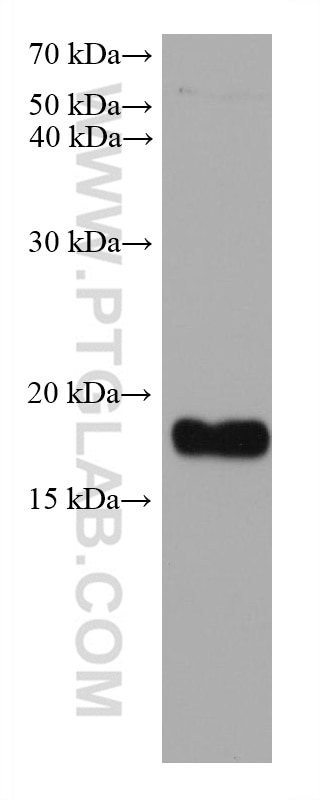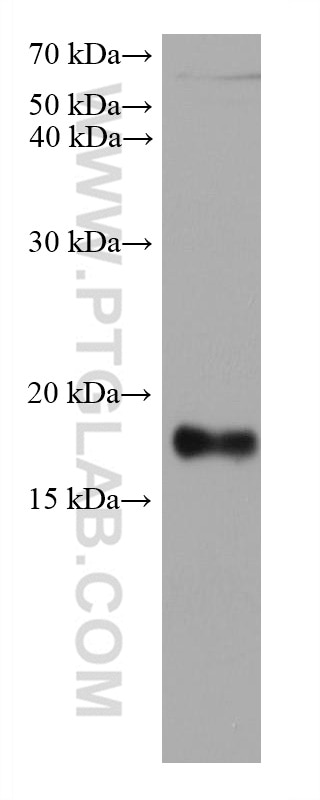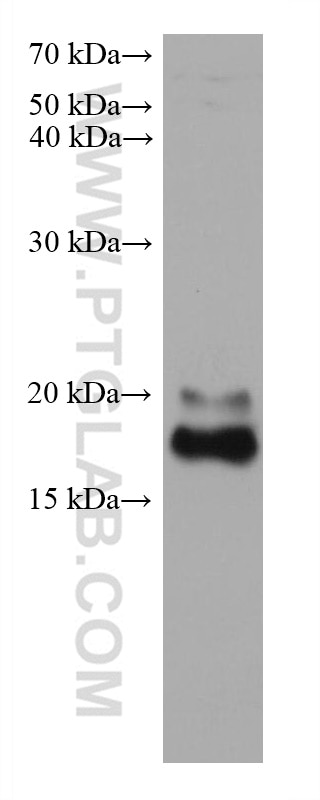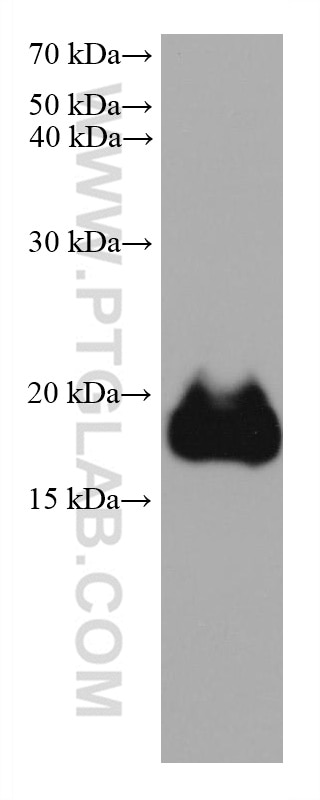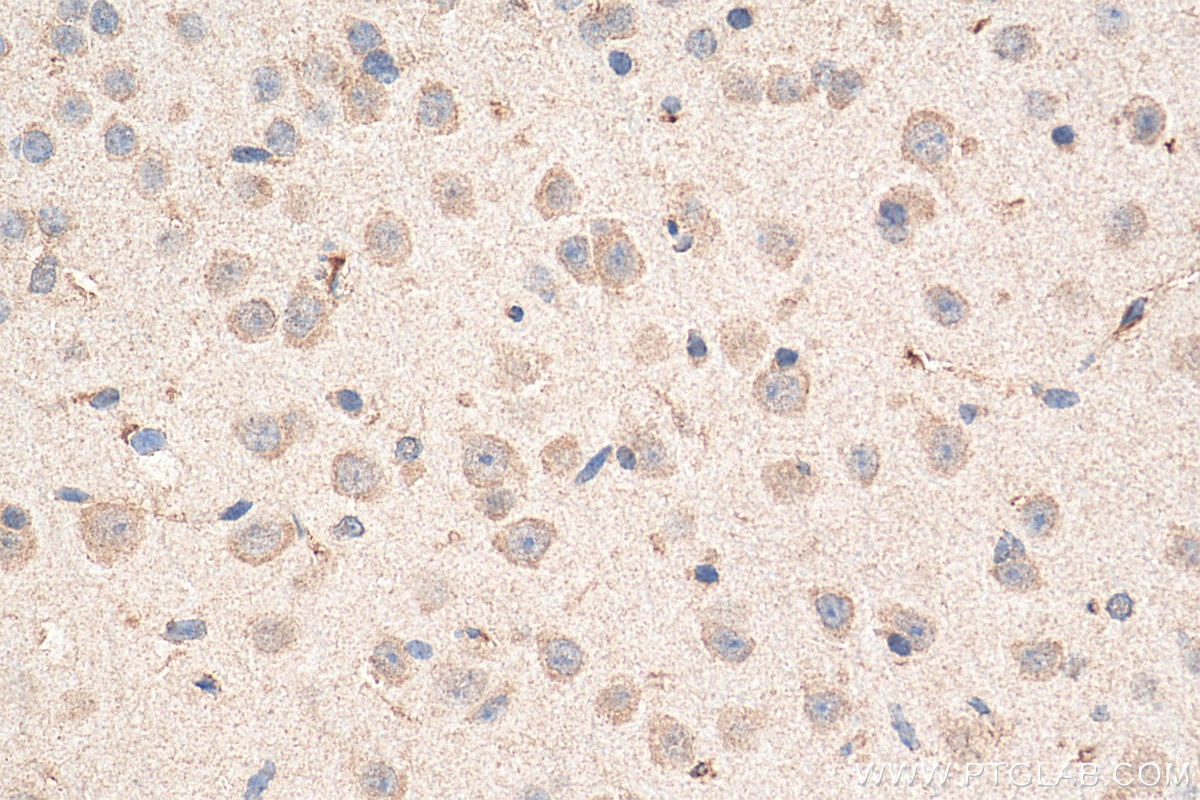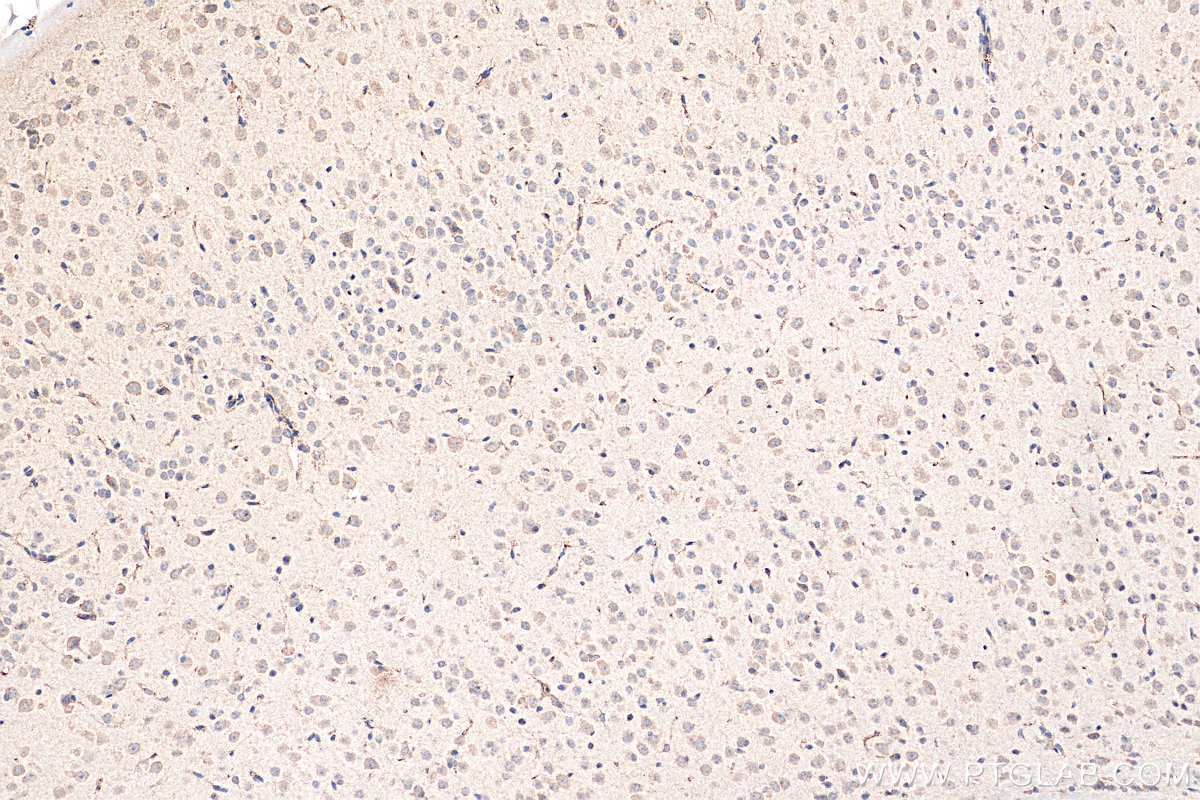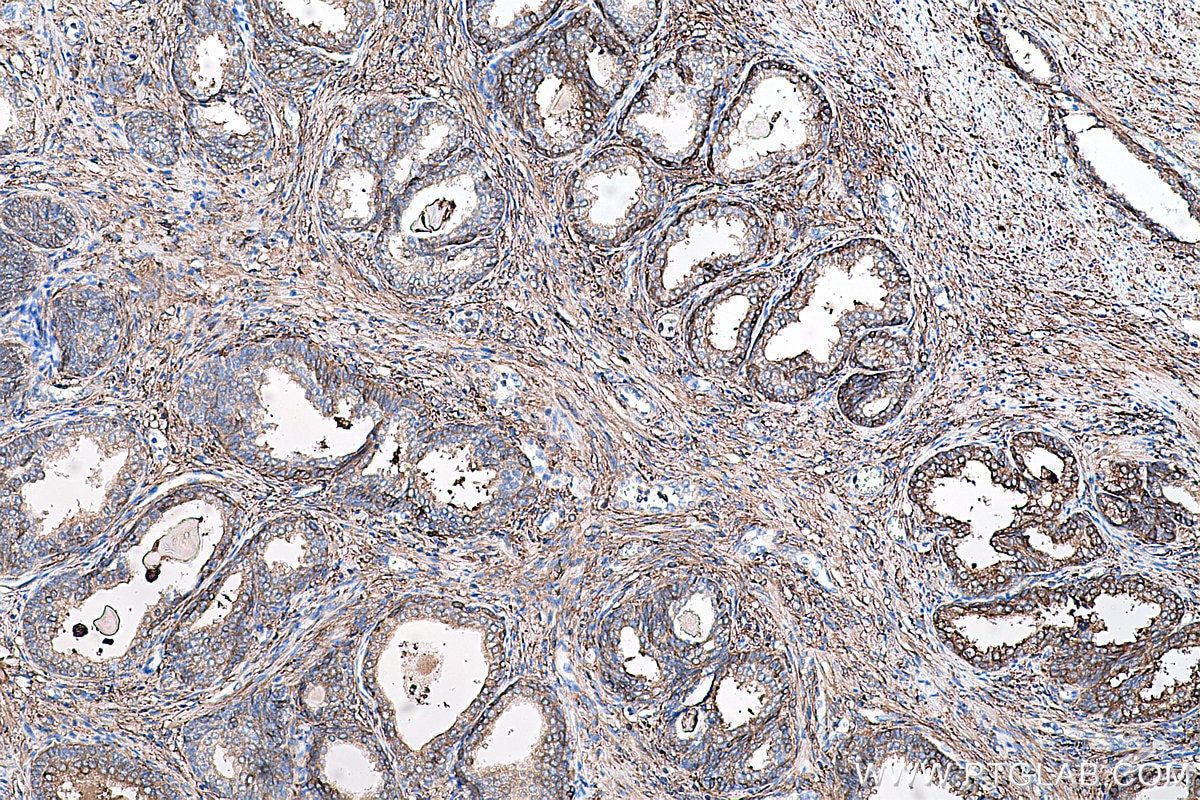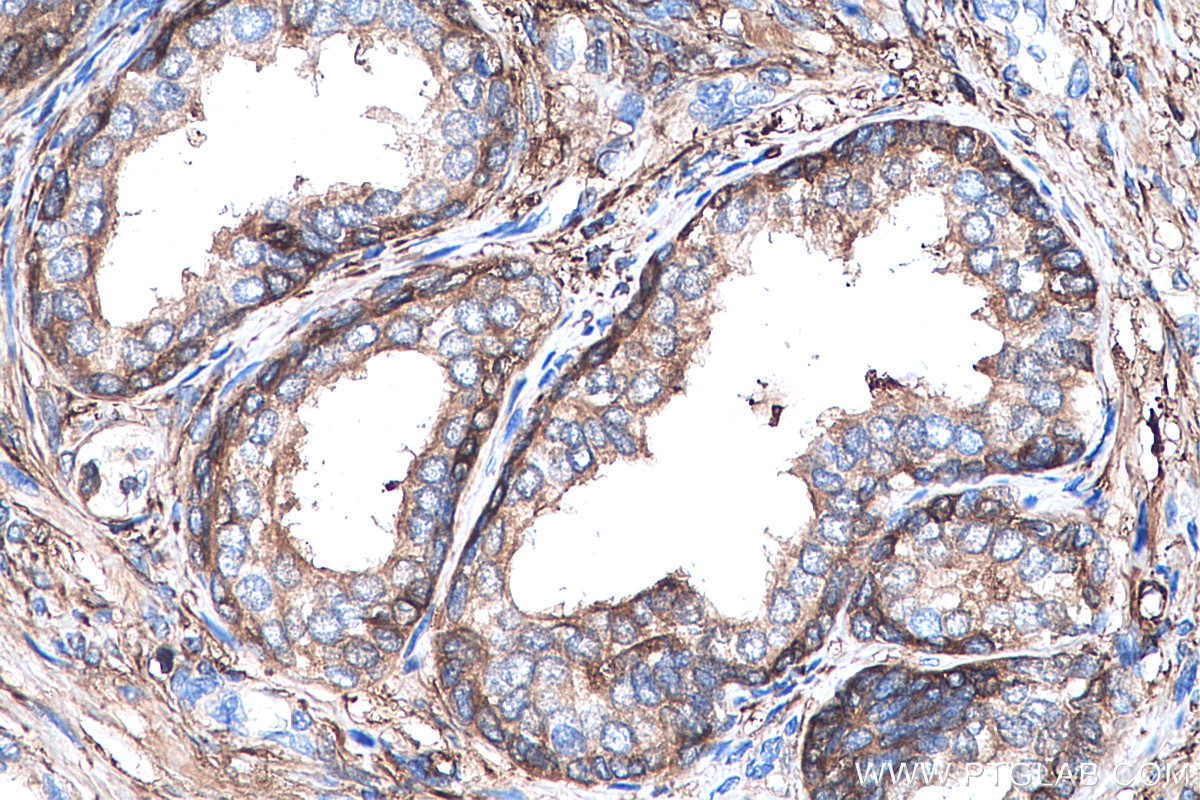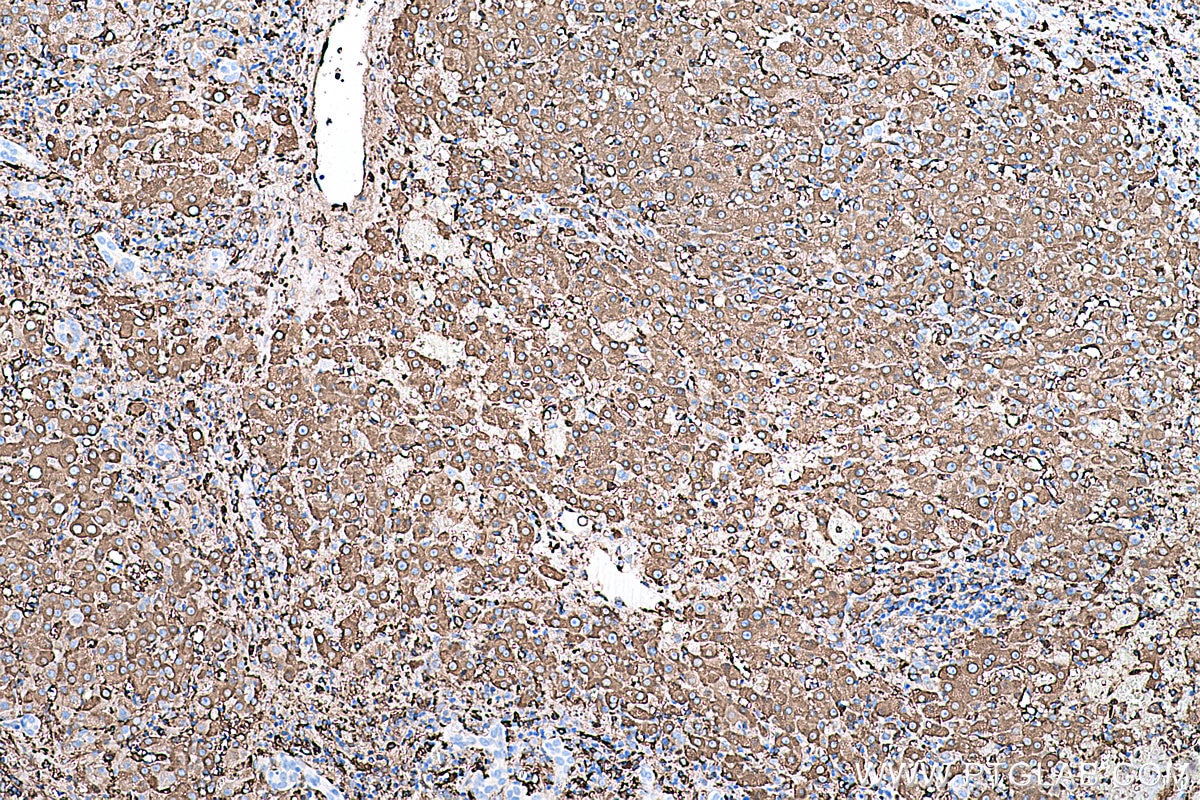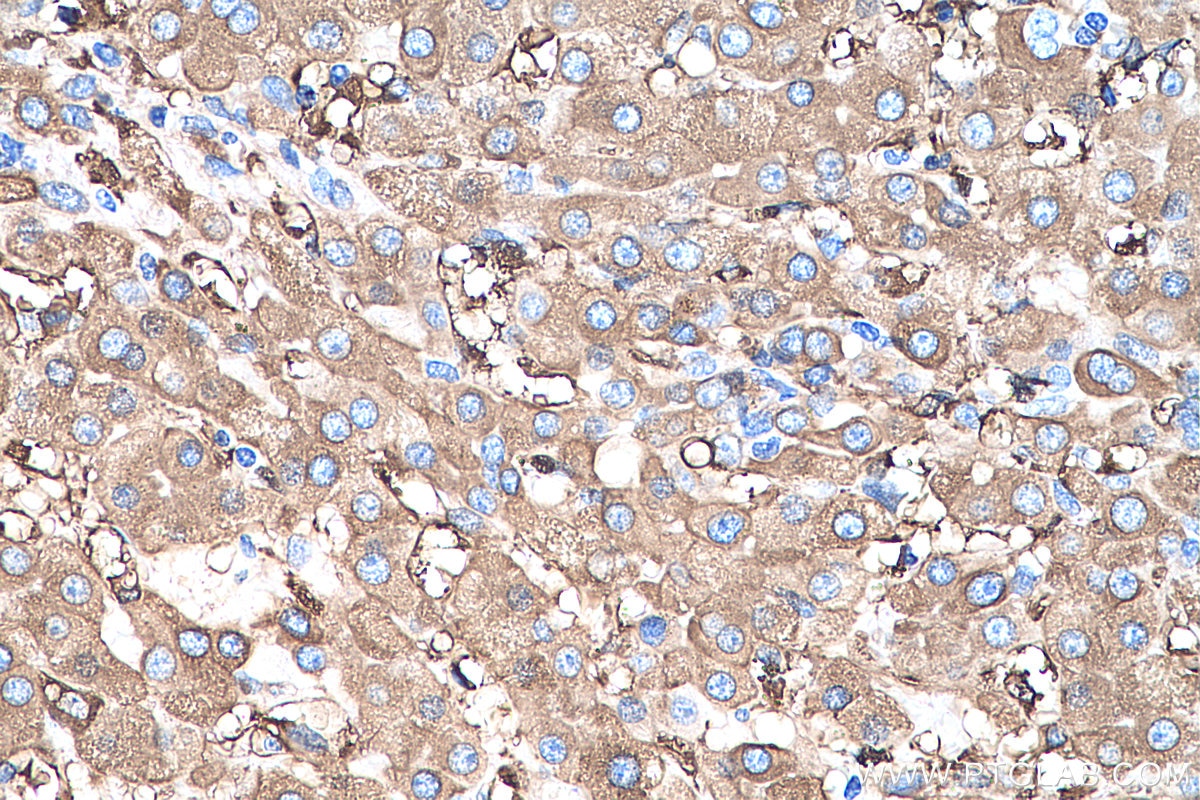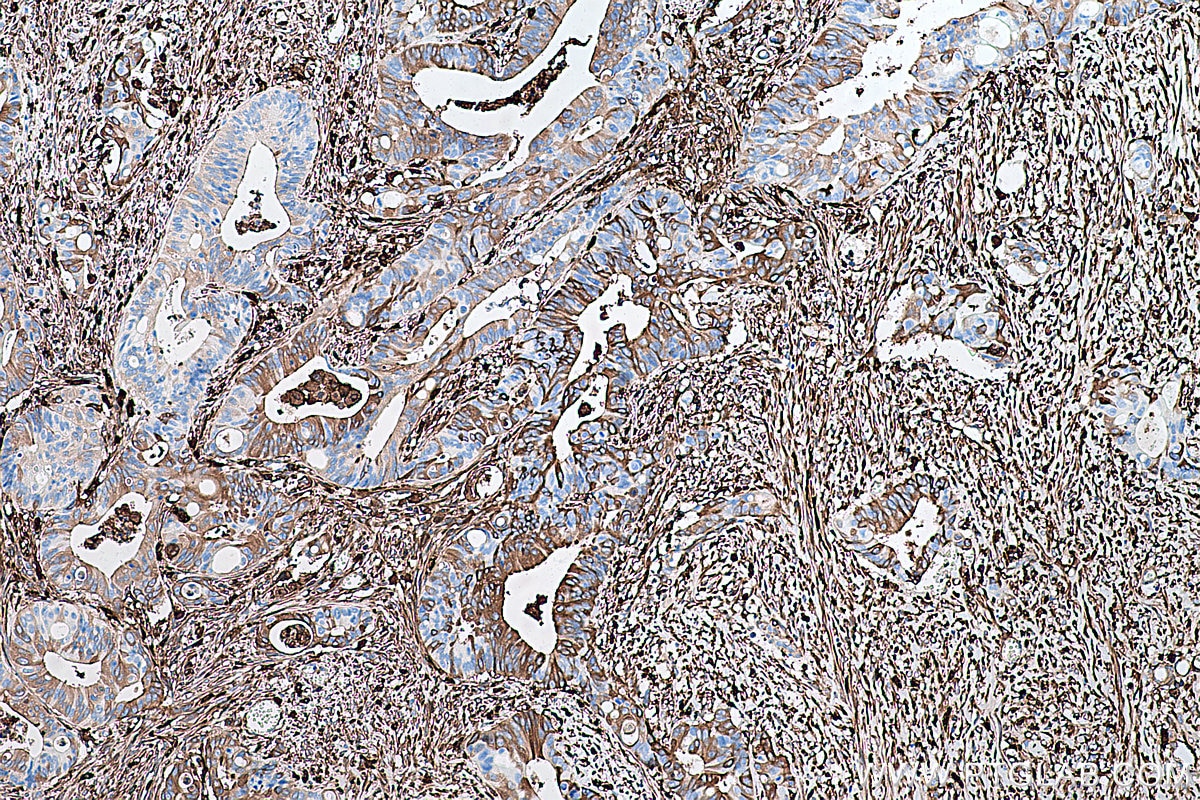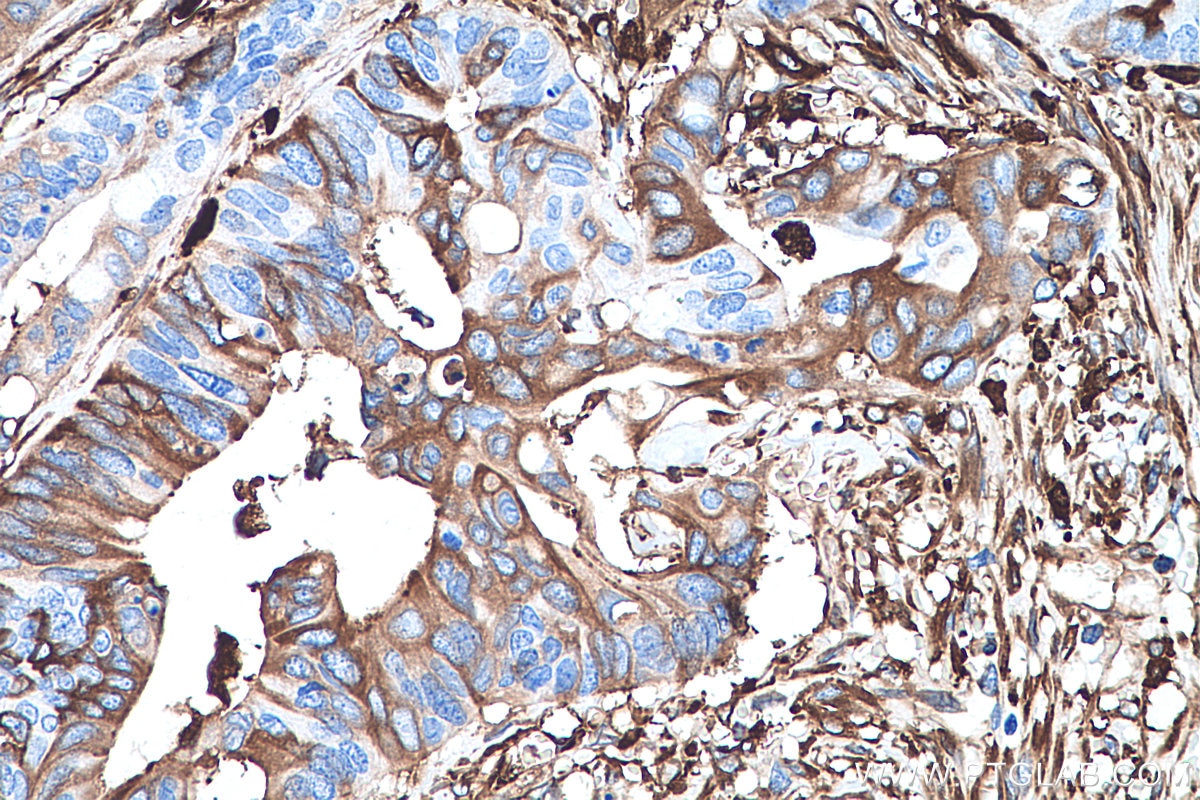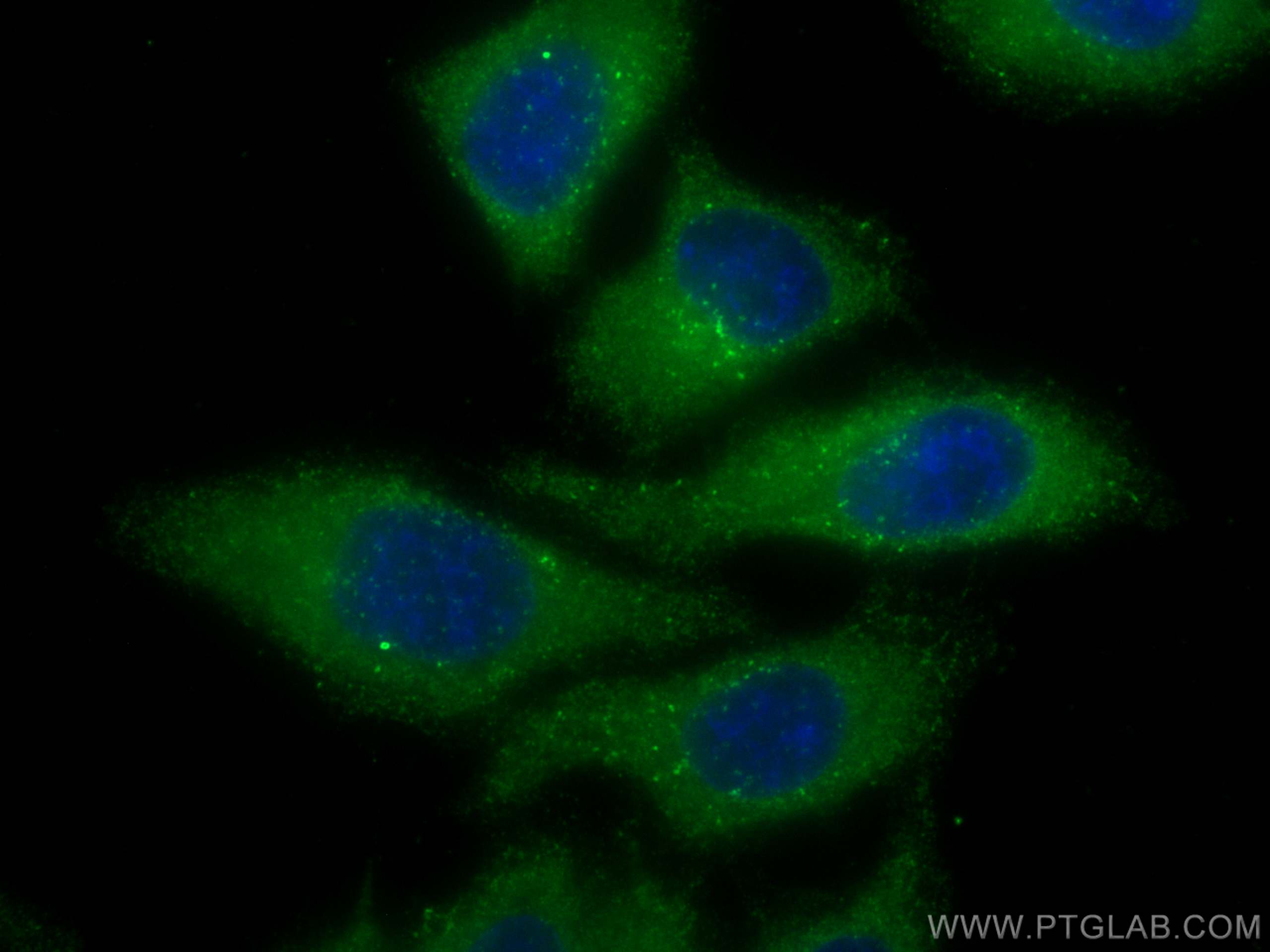Anticorps Monoclonal anti-Ferritin light chain
Ferritin light chain Monoclonal Antibody for WB, IHC, IF/ICC, ELISA
Hôte / Isotype
Mouse / IgG1
Réactivité testée
Humain, souris et plus (1)
Applications
WB, IHC, IF/ICC, ELISA
Conjugaison
Non conjugué
CloneNo.
1F9F5
N° de cat : 68068-1-Ig
Synonymes
Galerie de données de validation
Applications testées
| Résultats positifs en WB | cellules A549, cellules HeLa, cellules HepG2, tissu placentaire humain |
| Résultats positifs en IHC | tissu cérébral de souris, tissu de cancer de la prostate humain, tissu de cancer du côlon humain, tissu de cancer du foie humain il est suggéré de démasquer l'antigène avec un tampon de TE buffer pH 9.0; (*) À défaut, 'le démasquage de l'antigène peut être 'effectué avec un tampon citrate pH 6,0. |
| Résultats positifs en IF/ICC | cellules HepG2, |
Dilution recommandée
| Application | Dilution |
|---|---|
| Western Blot (WB) | WB : 1:5000-1:50000 |
| Immunohistochimie (IHC) | IHC : 1:500-1:2000 |
| Immunofluorescence (IF)/ICC | IF/ICC : 1:400-1:1600 |
| It is recommended that this reagent should be titrated in each testing system to obtain optimal results. | |
| Sample-dependent, check data in validation data gallery | |
Applications publiées
| WB | See 13 publications below |
| IHC | See 1 publications below |
Informations sur le produit
68068-1-Ig cible Ferritin light chain dans les applications de WB, IHC, IF/ICC, ELISA et montre une réactivité avec des échantillons Humain, souris
| Réactivité | Humain, souris |
| Réactivité citée | rat, Humain, souris |
| Hôte / Isotype | Mouse / IgG1 |
| Clonalité | Monoclonal |
| Type | Anticorps |
| Immunogène | Ferritin light chain Protéine recombinante Ag20637 |
| Nom complet | ferritin, light polypeptide |
| Masse moléculaire calculée | 19 kDa |
| Poids moléculaire observé | 18-20 kDa |
| Numéro d’acquisition GenBank | BC008439 |
| Symbole du gène | Ferritin light chain |
| Identification du gène (NCBI) | 2512 |
| Conjugaison | Non conjugué |
| Forme | Liquide |
| Méthode de purification | Purification par protéine G |
| Tampon de stockage | PBS with 0.02% sodium azide and 50% glycerol |
| Conditions de stockage | Stocker à -20°C. Stable pendant un an après l'expédition. L'aliquotage n'est pas nécessaire pour le stockage à -20oC Les 20ul contiennent 0,1% de BSA. |
Informations générales
FTL belongs to the ferritin family. It stores iron in a soluble, non-toxic, readily available form. FTL is important for iron homeostasis. It plays a role in delivery of iron to cells. FTL mediates iron uptake in capsule cells of the developing kidney. Mutation of FTL will cause hereditary hyperferritinemia-cataract syndrome (HHCS) or neurodegeneration with brain iron accumulation type 3 (NBIA3). Ferritin light polypeptide (FTL) and ferritin heavy polypeptide (FTH1) were the main constituents the striatum and cerebellar cortex revealed.
Protocole
| Product Specific Protocols | |
|---|---|
| WB protocol for Ferritin light chain antibody 68068-1-Ig | Download protocol |
| IHC protocol for Ferritin light chain antibody 68068-1-Ig | Download protocol |
| IF protocol for Ferritin light chain antibody 68068-1-Ig | Download protocol |
| Standard Protocols | |
|---|---|
| Click here to view our Standard Protocols |
Publications
| Species | Application | Title |
|---|---|---|
J Gastroenterol Indoleamine 2,3-dioxygenase 1-mediated iron metabolism in macrophages contributes to lipid deposition in nonalcoholic steatohepatitis | ||
J Neuroimmune Pharmacol Ghrelin Induces Ferroptosis Resistance and M2 Polarization of Microglia to Alleviate Neuroinflammation and Cognitive Impairment in Alzheimer's Disease | ||
Inflammopharmacology Sulfasalazine promotes ferroptosis through AKT-ERK1/2 and P53-SLC7A11 in rheumatoid arthritis | ||
J Nutr Biochem Curcumol ameliorates alcohol and high-fat diet-induced fatty liver disease via modulation of the Ceruloplasmin/iron overload/mtDNA signaling pathway | ||
J Ethnopharmacol Anti-papillary thyroid carcinoma effects of dioscorea bulbifera L. through ferroptosis and the PI3K/AKT pathway based on network pharmacology and experimental validation | ||
Biochim Biophys Acta Mol Basis Dis FTO alleviated ferroptosis in septic cardiomyopathy via mediating the m6A modification of BACH1 |
